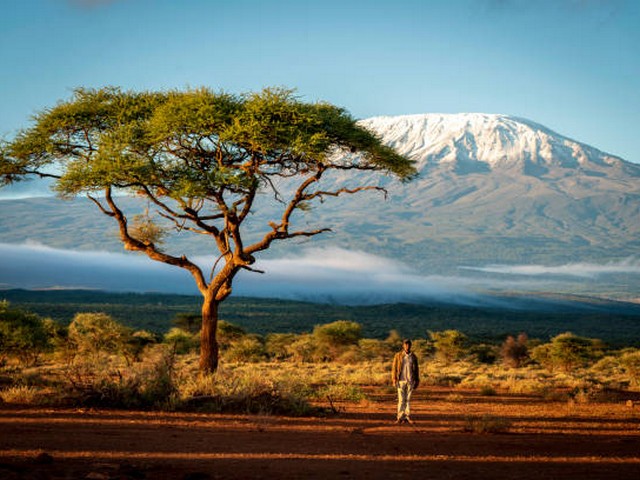How To Avoid Blisters On Kilimanjaro Treks: Step Up Your Comfort Game
Ascending the towering heights of Mount Kilimanjaro, a majestic emblem of Tanzania, is a dream etched in the hearts of many adventurers. From the lush rainforests at its base to its snow-capped peak, the journey is nothing short of epic. However, amidst the awe-inspiring landscapes and exhilarating climbs, there’s a common foe that many trekkers face – blisters. At Kilimanjaro Centre for Trekking and Ecotourism (KCTE), we believe your trek should be memorable for its sights and achievements, not the discomfort of blisters. Let’s embark on a journey to understand how you can avoid blisters on Kilimanjaro treks and ensure your adventure is as comfortable as it is breathtaking.
Understanding Blisters: A Trekker’s Woe
Before diving into prevention, it’s crucial to understand what blisters are. Blisters are small pockets of body fluid that form due to friction, heat, or damage to the skin. On the slopes of Kilimanjaro, constant walking and hiking can cause repetitive friction on your feet, making blisters a common issue among trekkers.
Choosing the Right Gear
Footwear: The First Line of Defense
Selecting Proper Footwear: The journey to the peak of Kilimanjaro demands footwear that is not only comfortable but also well-fitted. Opt for hiking boots that are specifically designed for long treks, offering good ankle support and a sturdy grip. Break in your boots weeks before your climb to ensure they conform well to your feet, reducing the risk of blisters caused by stiff, unyielding material.
Sock It Up Right: Pair your boots with moisture-wicking socks that keep your feet dry and reduce the friction that leads to blister formation. Consider investing in specialized trekking socks that provide extra padding in crucial areas like the heels and toes. Layering a thin, smooth sock underneath a thicker one can also be effective in minimizing friction.
Strategic Foot Care
Preventive Measures
Moisture Management: Keep your feet as dry as possible. Change your socks regularly throughout your trek to manage moisture and prevent the damp environment that fosters blisters.
Use of Barrier Creams and Tapes: Apply barrier creams to reduce friction or adhesive blister tapes on known hot spots on your feet as a preemptive measure.
Tactical Taping and Padding
Taping Techniques: Learn how to tape your feet effectively; this can be a game-changer. Proper taping can prevent blisters by protecting the most vulnerable parts of your feet from excessive rubbing.
Padding: Use specialized padding or bandages on areas prone to blisters. These act as a cushion, spreading out the pressure and decreasing friction.
Trail Wisdom: Walking Techniques and Rest Breaks
Mind Your Step
Adjust Your Walking Style: Pay attention to how you walk. Uneven gait and dragging feet increase friction and pressure, making blisters more likely. Practice walking in a way that is smooth and balanced, especially on varied terrains.
Pace Yourself: Maintaining a steady, moderate pace rather than alternating between bursts of speed and slow walking can help manage exertion and reduce foot strain.
Importance of Breaks
Take Regular Breaks: Use these pauses to remove your boots and socks, allowing your feet some time to air out. This not only helps in managing moisture but also gives your feet a much-needed break from the constant pressure.
Listen to Your Feet
Early Detection and Management
Be Vigilant: Pay close attention to what your feet are telling you. At the first sign of a hot spot (an area that feels warm and irritated), take a moment to address it. This could mean applying a new layer of tape, adjusting your socks, or simply resting for a few minutes.
Journey with KCTE: Where Comfort Meets Adventure
At Kilimanjaro Centre for Trekking and Ecotourism (KCTE), we’re dedicated not just to guiding you to the summit but ensuring your journey is as comfortable as possible. Our expert guides are trained to help you implement all these preventive measures effectively. Plus, they’re always ready to assist with any foot care needs that might arise during your trek.
Ready to Conquer Kilimanjaro?
Embarking on a Kilimanjaro trek is an adventure of a lifetime. While the challenge is undeniable, the joy of reaching the summit is unparalleled. Don’t let the fear of blisters hold you back. With the right preparation and the expert guidance of KCTE, you’re setting yourself up for a successful, memorable climb.
Book your Kilimanjaro climbing adventure with Kilimanjaro Centre for Trekking and Ecotourism (KCTE) today, and step confidently towards the roof of Africa, knowing you’re equipped to tackle every mile comfortably.
FAQs: Avoiding Blisters on Kilimanjaro Treks
Q: How long before my trek should I break in my new hiking boots?
A: Start breaking in your hiking boots at least a month before your trek. Wear them regularly to ensure they mold well to your feet’s shape.
Q: Are blister tapes and barrier creams readily available in Tanzania?
A: Yes, you can find blister tapes and barrier creams in major cities, but it’s advisable to bring your preferred brands with you to ensure availability.
Q: What should I do if I get a blister despite taking all precautions?
A: If a blister forms, it’s important to clean the area, gently puncture the blister if it’s large and painful, drain it, disinfect it, and then cover it with a sterile dressing. Our KCTE guides carry first aid kits and are trained to assist with such issues.
Q: How often should I change my socks during the trek?
A: It’s recommended to change your socks at least once a day more frequently if they become wet or heavily soiled. Carrying several pairs of socks is advisable.
Join us at KCTE for your Kilimanjaro adventure, and experience the thrill of the climb with the comfort and confidence you deserve. Happy trekking!




